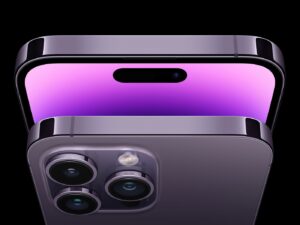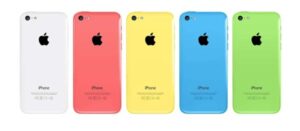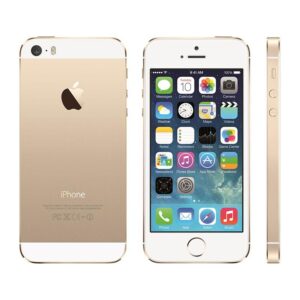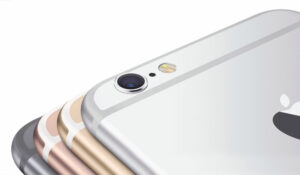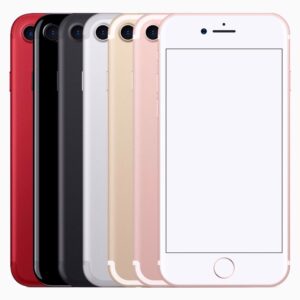Apple iPhone HISTORY:

The First iPhone introduced in 29 June 2007, after five months was announced on 9 January 2007. The First Generation iPhone was announced by then-Apple CEO Steve Jobs on January 9, 2007. Since then, Apple has annually released new iPhone models and iOS updates. As of November 1, 2018, more than 2.2 billion iPhones had been sold.
Since 2007, Apple has adapted and changed the design of the iPhone a number of times, ditching the metal design for a plastic one with the iPhone 3G and 3GS, before moving to glass for the Iphone 4. It was back to metal with the Iphone 5, before glass made its comeback for the Iphone 8 models, Iphone X and the Iphone XS models. In 2020 the company launched iPhones with 5G, upgraded cameras and much more besides, before releasing the Iphone 13 range in 2021.
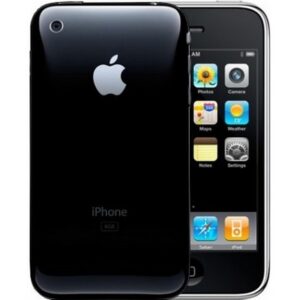
Original iPhone (2007)
A 3.5-inch screen with 480 × 320 resolution for 163ppi and a 412MHz ARM processor. This was where it all started for the iPhone. In many ways it wasn’t the first, but it was certainly the most important smartphone launch.
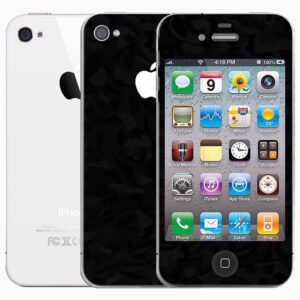
iPhone 4 (2010)
This is where design and power really jumped up, with a 3.5-inch 960 x 480 resolution screen and the introduction of the Retina display. The flattened glass design is now rather iconic, and it introduced a front camera with FaceTime. The iPhone 4 isn’t just a new piece of hardware. It’s the next vehicle for the world of iOS 4 and the App Store. But those hardware changes are welcomed. The inclusion of a higher-spec screen is the most significant step, combined with a faster processor, meaning it can capture and playback HD content from the new 5-megapixel camera.
iPhone 4S (2011).
IPhone 4S it is same like the iPhone 4, but with the addition of more speed and the introduction of Siri as the personal assistant. The iPhone 4S announced by CEO Tim Cook on October 4; Steve Jobs passed away the following day on October 5. The iPhone 4S is every best smartphone, and an excellent one at that.

iPhone 5 (2012)
Another jump for Apple, with a larger 4-inch display running 1136 x 640 resolution, bringing with it a change in aspect for the iPhone. It also introduced a new connector, lightning. What Apple has created with the iPhone 5 is an extremely polished smartphone that oozes appeal. It’s incredibly well built, easy to use and handle, features a beautiful screen, and comes packed with enough speed and power to service all your requirements
iPhone 5c (2013)
iPhone 5c is same as the iPhone 5, but iPhone 5c is with a plastic body. The iPhone 5C was all about colour and fun, It is a lovely phone that is solid in its performance and playful it its approach. The combination of the colourful exterior sits beautifully against the latest iOS 7 operating system and as an upgrade to the iPhone 4S, the 5C is a perfect option, and refreshes the iPhone 5 in a way that makes it a lot more fun than the iPhone 5 ever was.
iPhone 5s (2013)
Sticking to the design of the iPhone 5, iPhone 5S dropped the home button and introduced the Touch ID, providing a way to unlock the phone and authenticate purchases from the App Store The iPhone 5S fulfils the pre-determined destiny of all Apple “S” devices – it’s the one that’s normally met by the baying crowd as “meh”.
But the more we’ve played with it, the more we’ve used it, and the more it’s clear that Apple has made fast improvements here If you want a phone that just works, then the iPhone 5S is a very good smartphone to start however. Apple has made it look effortless which is no simple task, and in doing so – by making it look almost too easy – you can sometimes miss the beauty and power in your hand iPhone 5S is one of the best smartphone in the market.
iPhone 6 (2014)
This model saw a jump in size to a 4.7-inch 1334 x 640 screen with 326ppi, with a shift to a metal body. It also introduced Apple Pay, but was blighted by “bendgate”.
iPhone 6 is with iOS 8 and the new screen size in the iPhone 6, Apple has pretty much removed all excuses not to upgrade from older devices, as well as making the iPhone 6 a phone that’s difficult to ignore for those on other platforms. But there is still plenty missing: you don’t get the highest resolution display around, there’s no wireless charging, replaceable battery, no waterproofing, and no micro SD card.
iPhone 6plus (2014)
IPhone 6plus is same as the iPhone 6 but it is largely except for a bigger 5.5-inch screen with 1920 x 1080 resolution for 401ppi, plus a larger 2915mAh battery to keep it running. This was Apple recognizing the growing trend in big phones.
iPhone 6 plus is really comes down to how you want to use your phone. If you are normally sitting down or taking a more considered moment to check something then the 6 Plus is perfect. If you are more of an on-the-go kind of person, checking emails whilst wrestling with an umbrella, we suspect that you’ll do better with the regular iPhone 6.
iPhone 6S (2015)
iPhone 6S has No visual design change from the iPhone 6 but an upgrade to the aluminium used to make it stronger, along with changes in performance and battery life time and advanced features like 3D touch and 4K video capture. It stuck to the 4.7-inch 1334 x 750 pixel resolution and packed in the Apple A9 chip.
An iPhone S update year usually means a couple of new features that most people could take or leave, but the iPhone 6S smartphone is the most exciting S model for a long time. It bucks the usual trend, delivering a phone that will offer plenty to iPhone users new and old alike. In practice the to Touch 3D element has proved to be a gimmick that we could easily live without though.
iPhone 6SPlus (2015)
iPhone 6SPlus is the larger version of the 6S, it too offered a stronger body to fend off bendgate, while the display sat at 5.5-inches with a 1920 x 1080 pixel resolution, powered by the A9 chip.
There’s even greater pay-off in other areas for going bigger: you’ll get a lovely large, almost tablet-like screen (although it’s still not flagship-matching Quad HD resolution); a fantastic camera with optical image stabilisation (which the standard 6S lacks); and a battery life that will last you well beyond a day. For some, though, those same factors will be negated by the sheer scale of the device. The 6S Plus is a fantastic smartphone, but it is so big large heavy and impossible to carry.
iPhone 7 (2016)
Apple Company didn’t do a major redesign for the iPhone 7, although the introduction of Jet Black caused a stir, as did the evolution of (Product) Red. The iPhone 7 is powered by the A10 chip and waterproofing, while the display size and resolution remains as it was.
The removal of the 3.5mm headphone may remain briefly controversial, while the odd looking Air Pods have also raised some eyebrows. But this point of change isn’t really going to impact most users as much as it might sound. Ultimately it’s the iPhone 7’s other, more subtle changes – the new Home button and glossy/matte black finishes with better hidden antennas – that add to the refinement, without tearing up the rule book and starting again. It’s also these technologies that continue to ensure the iPhone 7 is a state-of-the-art mobile phone. IPhone 7 is the company’s best iPhone yet. It’s just that the best is only slighter better than what we’ve already had for the past year.
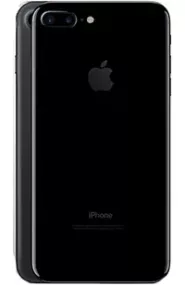
iPhone 7 Plus (2007)
This larger version of the phone marked its arrival by doing something that Apple Company hadn’t done before: it presented a major difference in feature with the introduction of the twin camera on the rear. While the rest of the phone incrementally moves on from the 6S Plus, partnering the new iPhone 7, the dual camera is all new, offering portrait and 2x optical zoom for quality close ups.
The lack of a headphone jack will either infuriate you or go unnoticed. The biggest change is with the cameras. The Depth Effect is a work in progress, but it doesn’t have to be used and doesn’t take away from the cameras’ overall excellence. Ultimately it’s the resulting images that are great, and the 2x optical zoom is welcomed.
However, as we’ve always said of the Plus range of I iPhones, it’s a big and heavy device that will divide opinion because of its wide body.
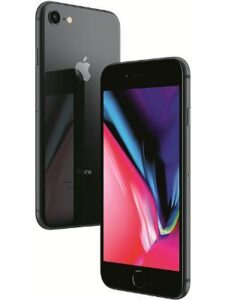
iPhone 8 (2017)
iPhone 8 display size and resolution might be the same as the iPhone 7 in the iPhone 8 but Apple added True Tone Technology made move back to glass over metal and doubled the storage capacities available. It also added wireless charging capabilities and upgraded the processor to the A11 chip
Overall, iPhone 8 is small, compact, powerful, and will deliver the ideal smart phone experience for many – especially those who aren’t fussed with all the latest and greatest features and the costs associated with them. Just because it has minimal upgrades doesn’t mean it doesn’t deliver maximum satisfaction.
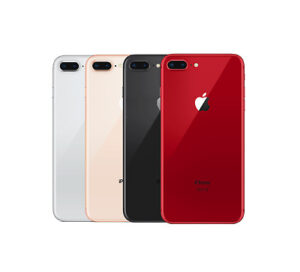
iPhone 8 Plus (2017)
Like the smaller model, the iPhone 8 Plus offers True Tone technology, wireless charging, a new processor over its predecessor and double the storage. It, and the smaller iPhone 8, were the last model to offer Finger Prints Touch ID as a biometric option in the iPhone X setting the standard for the future iPhones like 11/12/13/14etc with Face ID.
Overall, the iPhone 8 Plus smart phone is Apple’s everyman phone. It’s the perfect big phone for the masses; for the people who don’t need a future-facing face-reading smartphone; for those who want that large scale familiarity and known strengths that will get the job done. For those people, the iPhone 8 Plus smart phone delivers in droves.
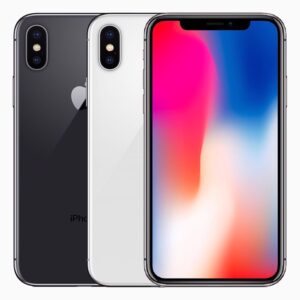
iPhone X (2017)
The iPhone X was the 10-year anniversary of iPhone Brand, marking the biggest shift in design since the original device from 2007. It launched with an OLED display, minimal bezels and Face ID facial recognition, ditching one of the iPhone’s most iconic interactions: the home button.
The only complaint is that premium cost. When it launched, the iPhone X started at £999 pounds, which is the same as the iPhone XS now. You might be able to find the X at a good price following the launch of the XS but you then have the £750 pounds iPhone XR to consider, which offers the same processing power as the XS and XS Max, making it faster and more capable than the iPhone X, even if not as premium in build.
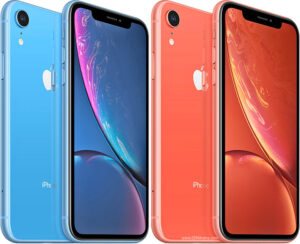
iPhone XR (2018)
IPhone XR launched at the bottom of the 2018 iPhone X range, offering an aluminums frame over stainless steel, a single camera over dual and an LCD display over OLED. It brought plenty of power, a large display, great camera and color though, making it a great buy for most.
Sure, the iPhone XR doesn’t offer a good perfect screen or camera setup that’s as good as the top-of-the-range, but that’s the play of online games in having will be more affordable handset. Besides, many will be perfectly happy with what’s on offer, especially as there’s no compromise in power. For those who want Apple’s latest design without spending a fortune, this is the iPhone for you.
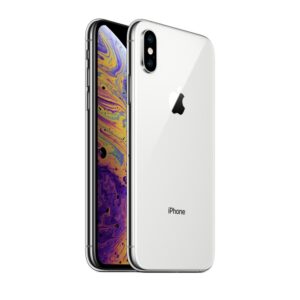
iPhone XS (2018)
The iPhone XS offers an improved camera over the iPhone X, dual-SIM support, A12 Bionic chip and a 512GB storage option, as well as a longer battery life which are great for gamers and a new Gold finish. The design remains the same as the 10-year anniversary model though.
The iPhone X was a breakthrough device in many ways. It introduced stainless steel as a premium body material and it moved to a display that dominated the front design of iPhone, sweeping aside the home button and bringing with it Face ID. It was a celebration of 10 years of iPhone and in some ways, compared to the iPhone 8 smart phone, it was risqué.
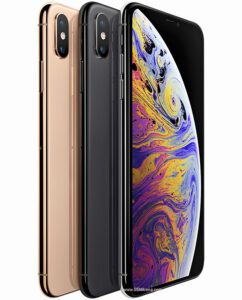
iPhone XS Max (2018)
iPhone XS Max introduced the option of a bigger model of the iPhone X one year after the 10-year anniversary of iPhone model, with all the same improvements as the iPhone XS but in a larger, expensive and fabulous package.
It may be too big for some, or too expensive for others iPhone users, but there’s always the iPhone XS for those who think the former, and the iPhone XR for those who think the latter. If you want the biggest, baddest iPhone in town, the XS Max is the one for you. It’s glorious.
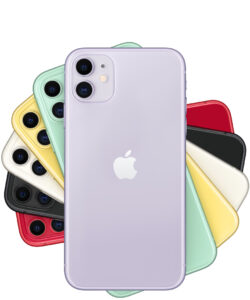
iPhone 11 (2019)
IPhone 11 succeeds the iPhone XR, and while it is identical in size and shape, it adds a secondary camera on the rear, along with a new camera housing that has a frosted finish. There are also some great new colors. The iPhone 11 has new hardware over the XR and some great new camera capabilities thanks to the wide-angle camera.
We loved the Apple iPhone XR when it launched in 2018. It was, and still is, Perfect and an excellent device. The iPhone 11 builds on that excellence.
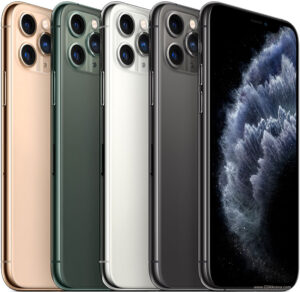
iPhone 11 Pro (2019)
IPhone 11 Pro succeeds the iPhone XS with an all-new feautures, somewhat polarizing camera housing, a lovely frosted matte glass finish and plenty of hardware upgrades – especially in the camera department.
If you like the iPhone mobiles and the best Apple makes, then the iPhone 11 Pro is best for you. It’s stylish, feature packed, and will easily impress you with all the capabilities that it offers.
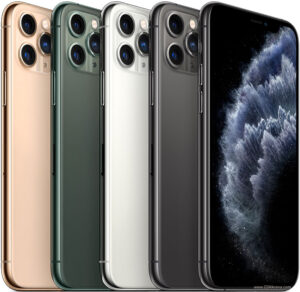
iPhone 11 Pro Max (2019)
IPhone 11 Pro Max offers the same design as the iPhone 11 Pro but on a larger scale, succeeding the iPhone XS Max. It is a 6.5-inch beauty – especially in the midnight green colour – and its camera capabilities are excellent, with Night Mode making low-light shots much better.
The iPhone 11 Pro Max is the top doggy of thr phones , the big daddy, the pro of the Pros the legend of the legends when it comes to the iPhone range. When compared to the 2018 iPhone 8 or the iPhone XS, the specs on this device are monster and it’s clear that Apple is pushing hard to retain dominance in the flagship space.
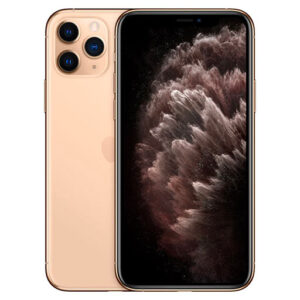
iPhone 12 (2020)
iPhone 12 was launched in September 2020. It offered a 6.1-inch Super Retina XDR OLED display, a ceramic material frame, a new (at the time) A14 Bionic chip as well as upgraded cameras. The focus of the iPhone 12 was very much on 5G – with each of the models having 5G capabilities but only using that when it’s available in order to save battery.
Look deep and closely and there are too much differences, but for that group of people that want a new iPhone, but just can’t justify the price of the iPhone 12 Pro range, this is a great choice without having to feel like you are settling for second best.
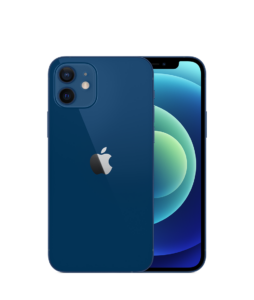
iPhone 12 Mini (2020)
iPhone 12 saw the release of a mini version of the iPhone 12 that featured the same technical prowess of the larger model but with a smaller 5.4-inch display and this look very decent . The idea was to offer all the same power but for customers who wanted something pocketable.
iPhone 12 mini might be small, but it’s certainly mighty. Sometimes the little things in life are the best.
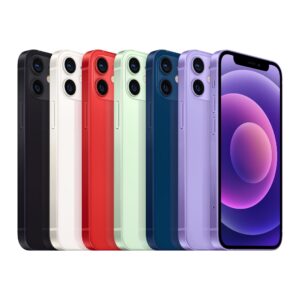
iPhone 12 Pro (2020)
IPhone 12 Pro has continued to evolve with new features and functiond added and new software enhancements made. This year’s model doubles down on photography further, bringing tech we have already been playing with to all the cameras on the iPhone 12 Pro rather than just a select few.
IPhone 12 Pro does all it can to warrant that Pro label does. The screen is stunning, the camera capability professional, and when you can use it, the download speeds with 5G, fast.
For those peoples that see themselves as a “pro” user, this delivers, delivers more than enough, enough in fact that means you’ll easily get the job you’re doing done.
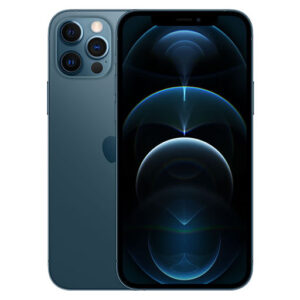
iPhone 12 Pro Max (2020)
IPhone 12 Pro Max was at the top of the pile of the iPhone 12 series sporting the same processor, same 5G connectivity, and same screen tech (albeit at different sizes, of course) to the 12 Pro. The biggest difference is however was the cameras and what they could do between the 12 Pro and the 12 Pro Max.
IPhone 12 Pro Max is the most comprehensive and expensive iPhone in the 2020 range. That’s because there’s a lot here: the screen is massive and in beautiful look, the cameras – being the main difference over the 12 Pro – are exceptional, and the overall performance is impressive.
If you want the maximal iPhone experience – enhanced photo abilities, large screen and all – then the iPhone 12 Pro Max is a big-screen dream for you just move further.
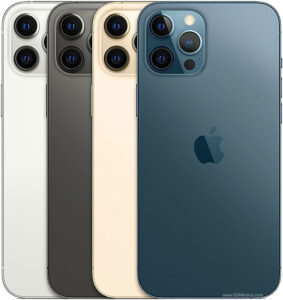
iPhone 13 (2021)
IPhone 13 saw tweaks over the previous iPhone 12 with a new camera housing, new processor, and refinements to the notch at the top of the display. It was the 13th model in the expensive range and it’s the latest flagship IPhone
You do miss out on a handful of nice-to-have features compared to the iPhone 13 Pro – including the telephoto zoom lens, macro mode, 120Hz fast-refresh display, and 1TB storage option – but the iPhone 13 is still an excellent all-round device that, importantly, doesn’t cost quite as much.

iPhone 13 Mini (2021)
IPhone 13 Mini is really Like IPhone 12 mini – the iPhone 13 mini followed the same tradition and delivered a small iPhone but with the same power as the larger iPhone 13. It might be the last though as there’s talk of no iPhone 14 mini for 2022.
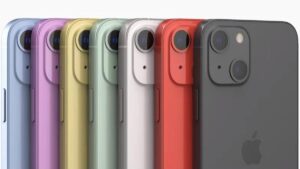
iPhone 13 Pro (2021)
Apple’s flagship handset, the iPhone 13 Pro, came with a new processor, the same 5G, and many refinements including a faster refresh rate on the screen and a smaller “notch” at the top of the display. There are also a couple of new colors for those keen to show off the new model.
Start to use the iPhone 13 Pro Mobile, however, and you’ll slowly begin to notice those small but important changes. The increased battery life is an obvious benefit, the smoother screen experience is great (and the more entry iPhone 13 lacks this Pro Motion features and functions), and that updated notch is less noticeable too. It’s just all-round better and better.
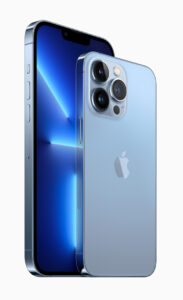
iPhone 13 Pro MAX
Unlike previous years, the iPhone 13 Pro Max featured an identical setup to the iPhone 13 Pro making this really about screen size rather than other things like the camera. That approach was welcomed by many who had previously felt they had to opt for the larger model to get all the new features of the iPhones.
iPhone 13 Pro Max doesn’t move the experience along hugely over its 2020 predecessor – much as we love the smoothness provided by Pro Motion faster screen refresh – it’s still the ultimate choice if you want all the features and all the stamina.
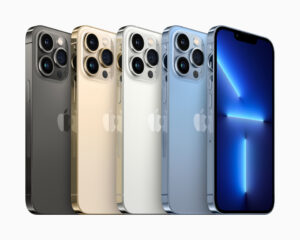
IPhone 14/14 Plus/14 Pro/14 Pro Max (2022)
Apple has, at last, announced its IPhone 14 series at a typically highly-produced event in Cupertino, meaning we can finally sink our teeth into the different models that it’s releasing this year.
There are four devices within the series, comprising the iphone, iPhone 14 Plus, iPhone 14 Pro and iPhone 14 Pro Max. Yes, that’s right, no iPhone 14 mini is launched in this year it – clearly it just wasn’t popular enough.
